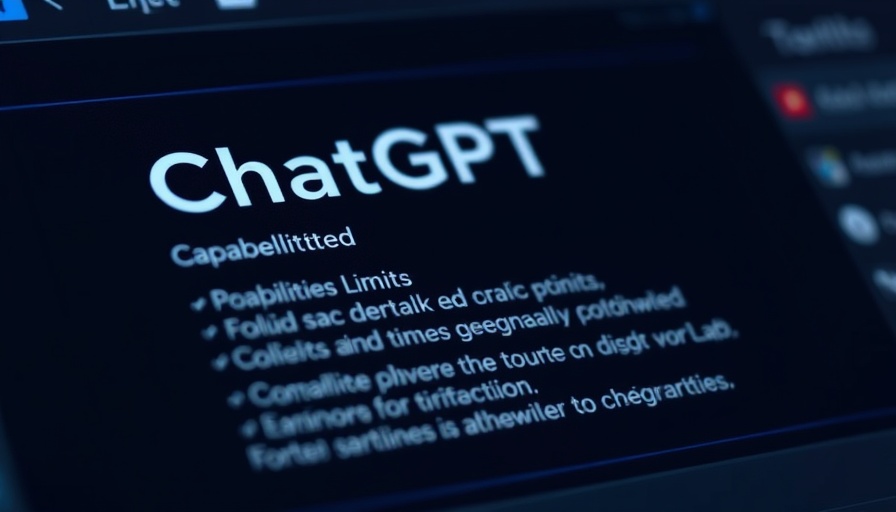
OpenAI's Ambitious Stargate Initiative: Revolutionizing AI Infrastructure
In a groundbreaking step for artificial intelligence technology, OpenAI has announced a partnership with Oracle to launch the first Stargate data center, poised to house an astounding 400,000 Nvidia GPUs. This initiative marks a significant milestone in AI infrastructure, potentially transforming how computing resources are allocated and utilized in AI models.
The Need for Robust AI Infrastructure
As AI technologies continue to evolve, the demand for powerful computing resources has surged. Models like GPT-3 and its successors require immense processing power to operate effectively, necessitating cutting-edge hardware. This is where OpenAI’s Stargate project comes into play, aiming to establish up to ten development campuses across the United States, each capable of delivering over 1 gigawatt of power.
A Closer Look at the Stargate Abilene Data Center
Set to become the first of its kind, the Stargate Abilene data center will start deploying 64,000 Nvidia GB200 GPUs by 2026, with an initial 16,000 expected to be operational by the end of summer 2024. This gradual rollout illustrates a methodical approach to building a state-of-the-art AI computing environment. OpenAI’s strategic collaboration with Oracle, which will oversee sourcing and operations, highlights the importance of partnerships in achieving technological advancements.
The Financial Stakes: A $500 Billion Venture
The Stargate initiative is part of a colossal $500 billion venture that includes key players such as SoftBank and Abu Dhabi's MGX. This ambitious project illustrates not only the financial backing behind AI development but also the collaborative effort needed to pioneer advancements in AI technology. As more companies join the fray with similar large-scale projects, the competition to develop superior AI capabilities is heating up.
Limitless Potential: Future Implications for AI Technology
The implications of the Stargate project extend beyond mere hardware deployment. With 400,000 Nvidia chips at its disposal, the potential for refining AI models becomes unprecedented. Enhanced performance could lead to breakthroughs in natural language processing, machine learning applications, and various sectors including healthcare, finance, and autonomous driving.
Global Competition and the Advantage of Scale
While OpenAI's Stargate initiative will solidify its position as a leader in AI infrastructure, global competitors are also enhancing their capabilities. For instance, Elon Musk’s xAI Colossus supercomputer is leveraging similar technologies for its operations in Memphis. As nations and companies race to harness AI, the stakes rise not just for individual organizations but for international competitiveness as well.
Understanding the Broader AI Landscape
This major development also prompts fresh discussions about ethical AI use and the implications of housing significant AI resources. With innovations such as OpenAI's Stargate data centers emerging, there is a pressing need to navigate the moral landscape of artificial intelligence. As AI capabilities grow, so do the responsibilities that come with deploying such technologies.
Conclusion
OpenAI's Stargate data center project represents a bold leap into the future of AI, combining extensive resources and strategic partnerships. For AI enthusiasts and industry stakeholders, this initiative signifies a renaissance in computing capabilities that could shape the next generation of intelligent systems. As we witness developments like this, it raises critical questions about how these technologies will be utilized and the broader impacts on society.
Join the conversation around these advancements in AI. How do you envision the future of artificial intelligence transforming our world?
 Add Row
Add Row  Add
Add 




 Add Row
Add Row  Add
Add 

Write A Comment